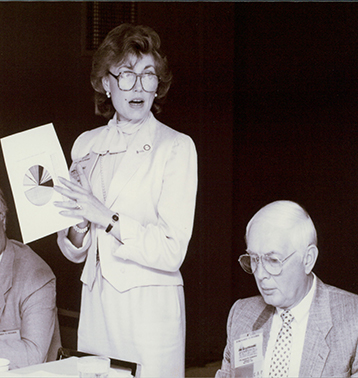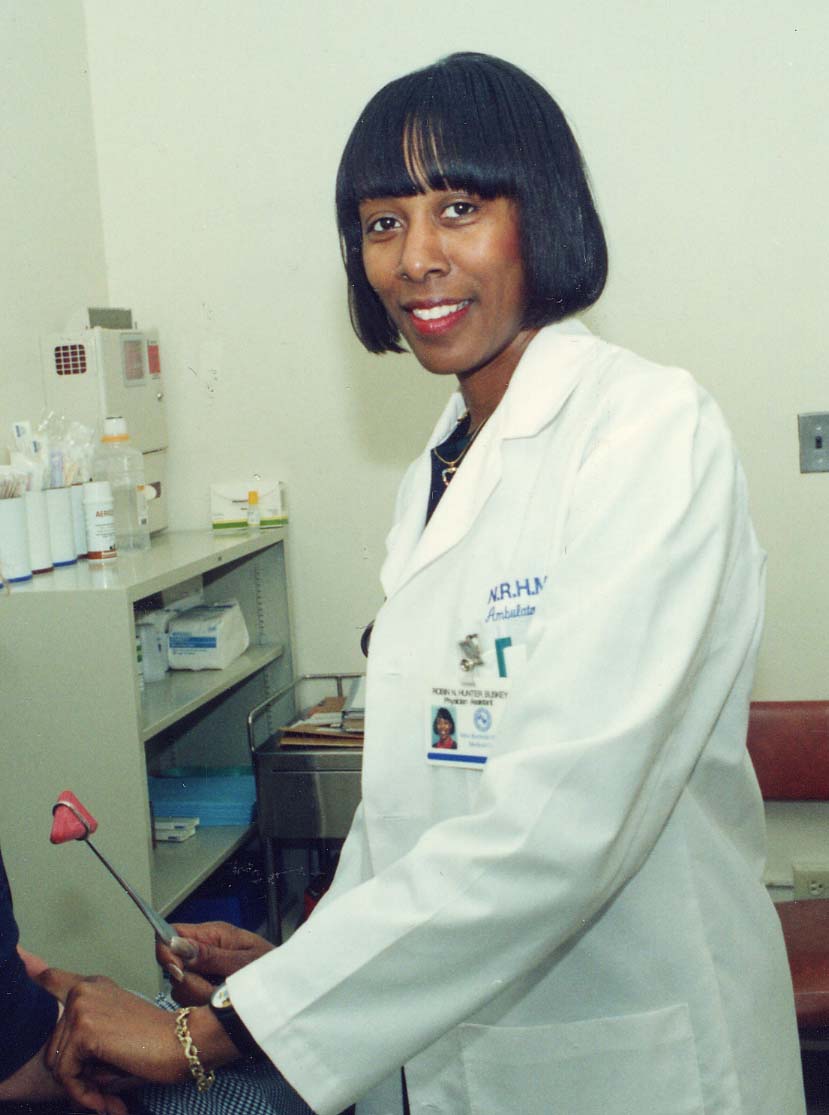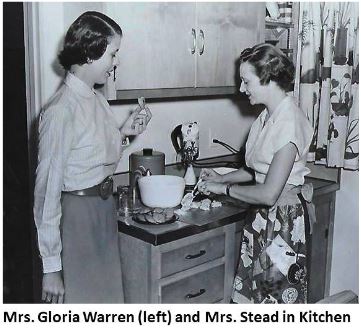
Joyce Nichols was the first female PA. She graduated from the Duke PA program in 1970. She had applied to the program three times prior to her acceptance. She was originally denied because she was not a military corpsman, she had children, and she was a woman. During this time in US history, the majority of college students were men, and it was believed that because of the aforementioned factors she would not be dedicated to her studies. She proved her naysayers wrong and went on to have a successful career as a PA and as an advocate for rural health care, health care to underserved populations, and for minorities to get involved in the medical field. Click here to listen to Joyce Nichols’ Oral History
The PA profession has had an abundance of strong ladies that have helped made the profession great. Below are just a few biographies, oral histories, videos, and exhibits of those who made history by making a difference. So many awesome women have contributed to the PA profession that they are too numerous to have all in one place, so please visit our biography, oral history and photograph webpages to learn more!
Oral Histories:
Jamilah Ali Alexander – (Shares about working with HIV/AIDS patients and being a women’s health advocate)
Diane Bruessow – (AAPA Board Member and advocate for health care to underrepresented groups)
Kara Caruthers – (PA Educator and President of PAEA)
Vicki Chan-Padgett – [Audio Only] (Graduate from the Air Force PA Program. Shares about being the program director of the Air Force PA Program and her involvement in setting up the IPAP)
Michelle DiBaise – (Educator and PAEA Board Member)
Amelia Duran-Stanton – (Educator, Researcher and Army PA)
Catherine Dragon – (Shares about being a female PA in the early years of the profession)
Christine Everett – (PA Educator and advocate for PA Researchers)
Pauline Gross – (Second woman PA to receive Colonel rank in the Army)
Andrea Heeter – (Works with the Indian Health Service)
Amy Jackson – (Was a driving force in developing the first Army PA Handbook)
Lisa Dandrea Lenell – (A nationally recognized broadcaster, executive, educator, consultant, volunteer and PA advocate)
Heidi Miller – (Shares about being a PA Educator and working with early HIV patients)
Joyce Nichols – [Audio Only] (First female PA. She talks about being the first woman in the PA profession and her involvement with the AAPA Board and Minority Affairs Committee. This is the last interview Ms. Nichols gave before she passed away.)

Tonia Poteat – [Audio Only] (PA educator, talks on her informational campaigns to stop the spread of HIV/AIDS and her advocacy for LGBTQ health care)
Karen Roberts – (PA educator, shares about her involvement with the St. George’s, University of London PA Program)
Justine Strand de Oliveira (Shares about being a PA in Texas in the early days of the profession)
Clara Vanderbilt – [Audio Only] (One of the first PAs to be trained in surgery, was on the first AAPA Board and helped set up the NYSSPA and the Association of Postgraduate PA Programs)
Judith Willis – (First Female President of the AAPA) [Photo to the right]
Videos:
Karen Bass – The first PA to sit on the US House of Representatives talks about Project Access
Susanne Greenberg APAP Panel – Greenberg talks about the early days of APAP (Now PAEA)
Joyce Nichols PAragon Awards – Video shown during AAPA Award Ceremony about Nichols’s career
Joyce Nichols’s Rural Health Clinic [Photo to the right] – Short segment on Joyce Nichols’s health clinic
Peggy Valentine – Co-founder of Project Access’s speech on the program
Biographies:
Ruth Ballweg (Helped set up international PA programs, Former Program Director of MEDEX Northwest)
Jacqueline Barnett (PA Educator, advocate for diversity in the PA profession)
Karen Bass (First PA to be elected to US House of Representatives)
Sherrie Borden – Former AAPA President and writer/editor of the first book for PAs on professional liability issues, The Professional Liability Handbook.
Stephanie Bowlin (First PA to become a dean and Past Chair of the ARC-PA)
Libby Coyte – (First and only PA to serve as a member of the Iowa Board of Medical Examiners and past AAPA President)
Ann Davis (AAPA Staff Member, helped enable PA practice legislation in New Jersey and Mississippi)
COL Melanie Ellis – (Program Director of IPAP and PA Consultant to the Air Force Surgeon General)
Elaine Grant (Past AAPA President, Helped to set up the New Jersey State Society of PAs)
Deborah Gerbert (Past AAPA President, President of the PA History Society)
Pauline Gross (Second woman PA to receive Colonel rank in the Army)

Robin Hunter-Buskey (First African American Chair of the NCCPA, Works in the USPHS) [Photo to the right]
Amy Jackson (Army PA, Was a driving force in developing the first Army PA Handbook)
Leslie Kole (One of the first PA Staff Members of AAPA, Former Editor of JAAPA)
Sharon Luke (PA Educator, CEO of the ARC-PA)
Saibatu Mansaray (Former Army PA and first female Army PA to serve on the White House Medical Unit)
Dawn Morton-Rias (First PA to serve as the CEO/Executive Officer of the NCCPA)
Joyce Nichols (First female PA, co-founder of the Minority Affairs Committee, and the Minority Affairs Committee’s first Chair)
Josanne Pagel (Former AAPA president and developed the Cleveland Clinic Physician Assistant Services Department)
Kathy Pedersen (PA Educator and International Humanitarian)
Maryann Ramos (Pentagon PA and first responder during 9/11 attack)
Janice Tramel (PA Educator, founding member of the African Heritage Caucus, and the first African American PA to chair a state regulatory/licensing agency)
Peggy Valentine (one of the co-founders of Project Access)
Clara Vanderbilt (Member of first AAPA Board and NYSSPA Board, First Surgical PA Intern, and helped establish the Association of Postgraduate Physician Assistant Programs)

Judith Willis (First female President of AAPA, PA Educator, Researcher)
Exhibits/Articles:
Dr. Stead’s Wife, Evelyn, was an Innovator Too
First PA Student Medical Challenge Bowl
AAPA’s Women’s Interest Caucus and the Equal Rights Amendment




